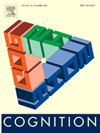“视觉”概念的神经专门化在没有视觉的情况下出现。
IF 2.8
1区 心理学
Q1 PSYCHOLOGY, EXPERIMENTAL
引用次数: 0
摘要
“不同的身体/不同的概念假说”是一些具体化理论的核心,它提出我们身体的感觉能力塑造了我们概念的认知和神经基础。我们通过比较先天失明(n = 21)和视力正常(n = 22)的成年人的“视觉”类别(“生物”或动物,如老虎和光事件,如闪光)的行为语义相似性判断和神经特征(fMRI)来验证这一假设。将涉及“视觉”实体/名词和事件/动词(动物和光事件)的单词与来自同一语法类的视觉依赖性较低的类别(动物与地方名词、光与声音、嘴和手动词)进行比较。关于动物的类别内语义相似性判断(例如,麻雀与雀)在不同群体中部分不同,这与视力正常的人依靠视觉学习信息对动物做出这种判断的观点是一致的。然而,在包括楔前叶在内的颞顶叶语义网络中,对生物的强大的神经专门化在盲人和视力正常的人中都被观察到。对于只能通过视觉直接接触的轻微事件,不同组的行为判断是无法区分的。对光事件的神经反应在各组之间也相似:在盲人和正常人中,与实体概念相比,左颞中回(LMTG+)对事件概念(包括光事件)的反应更多。LMTG+的多变量神经活动模式在不同的事件类型中有所区别,包括轻事件与其他事件类型。总之,我们发现以前归于视觉经验的概念的神经特征不需要视觉。在广泛的语义类型中,概念表征独立于感官经验而发展。本文章由计算机程序翻译,如有差异,请以英文原文为准。
Neural specialization for ‘visual’ concepts emerges in the absence of vision
The ‘different-body/different-concepts hypothesis’ central to some embodiment theories proposes that the sensory capacities of our bodies shape the cognitive and neural basis of our concepts. We tested this hypothesis by comparing behavioral semantic similarity judgments and neural signatures (fMRI) of ‘visual’ categories (‘living things,’ or animals, e.g., tiger, and light events, e.g., sparkle) across congenitally blind (n = 21) and sighted (n = 22) adults. Words referring to ‘visual’ entities/nouns and events/verbs (animals and light events) were compared to less vision-dependent categories from the same grammatical class (animal vs. place nouns, light vs. sound, mouth, and hand verbs). Within-category semantic similarity judgments about animals (e.g., sparrow vs. finch) were partially different across groups, consistent with the idea that sighted people rely on visually learned information to make such judgments about animals. However, robust neural specialization for living things in temporoparietal semantic networks, including in the precuneus, was observed in blind and sighted people alike. For light events, which are directly accessible only through vision, behavioral judgments were indistinguishable across groups. Neural responses to light events were also similar across groups: in both blind and sighted people, the left middle temporal gyrus (LMTG+) responded more to event concepts, including light events, compared to entity concepts. Multivariate patterns of neural activity in LMTG+ distinguished among different event types, including light events vs. other event types. In sum, we find that neural signatures of concepts previously attributed to visual experience do not require vision. Across a wide range of semantic types, conceptual representations develop independent of sensory experience.
求助全文
通过发布文献求助,成功后即可免费获取论文全文。
去求助
来源期刊

Cognition
PSYCHOLOGY, EXPERIMENTAL-
CiteScore
6.40
自引率
5.90%
发文量
283
期刊介绍:
Cognition is an international journal that publishes theoretical and experimental papers on the study of the mind. It covers a wide variety of subjects concerning all the different aspects of cognition, ranging from biological and experimental studies to formal analysis. Contributions from the fields of psychology, neuroscience, linguistics, computer science, mathematics, ethology and philosophy are welcome in this journal provided that they have some bearing on the functioning of the mind. In addition, the journal serves as a forum for discussion of social and political aspects of cognitive science.
 求助内容:
求助内容: 应助结果提醒方式:
应助结果提醒方式:


